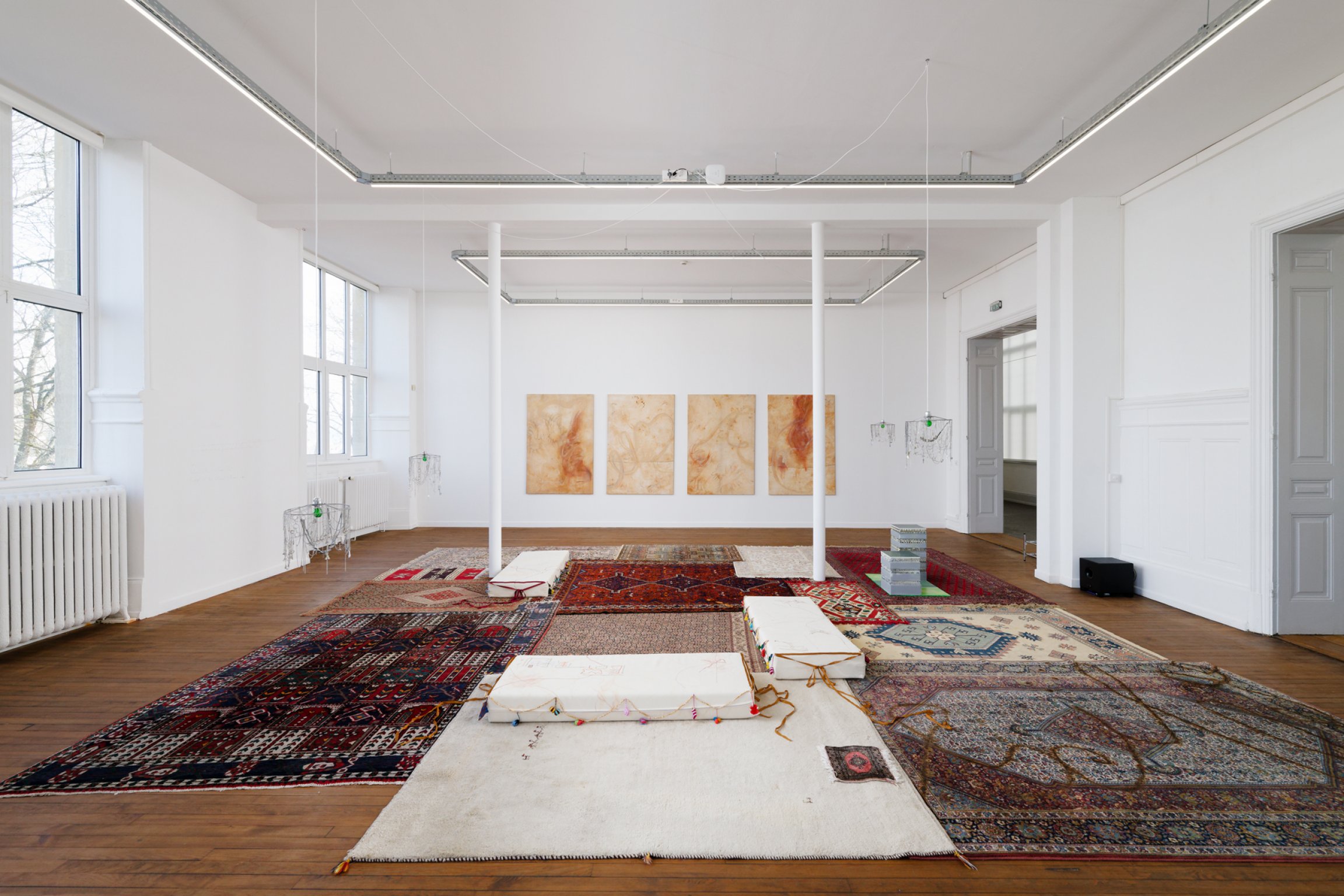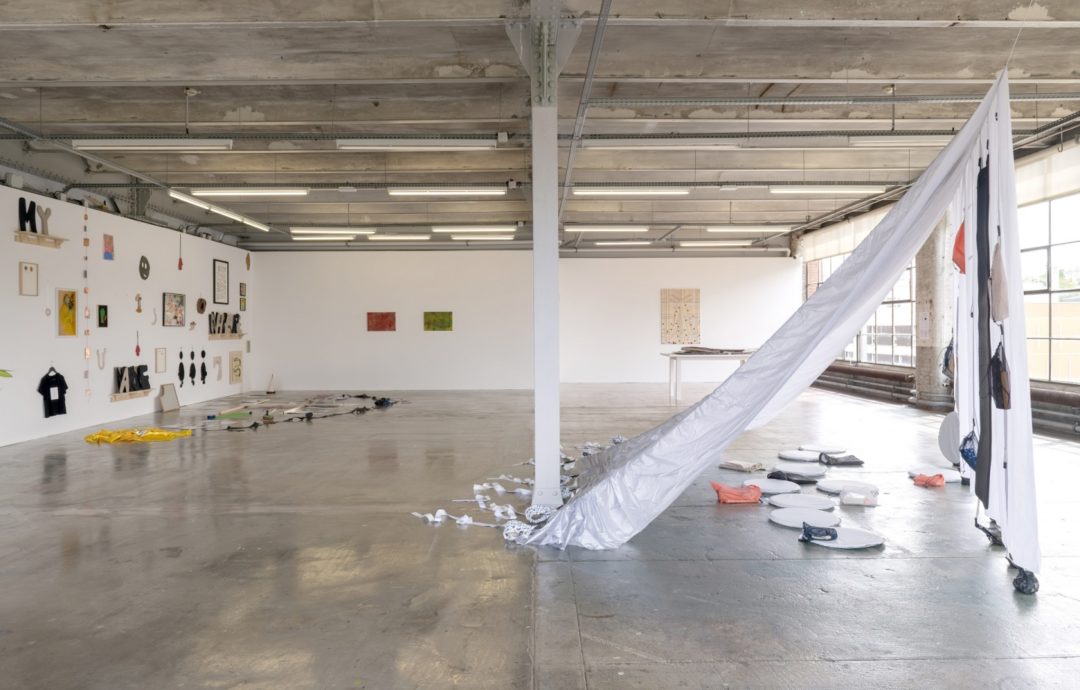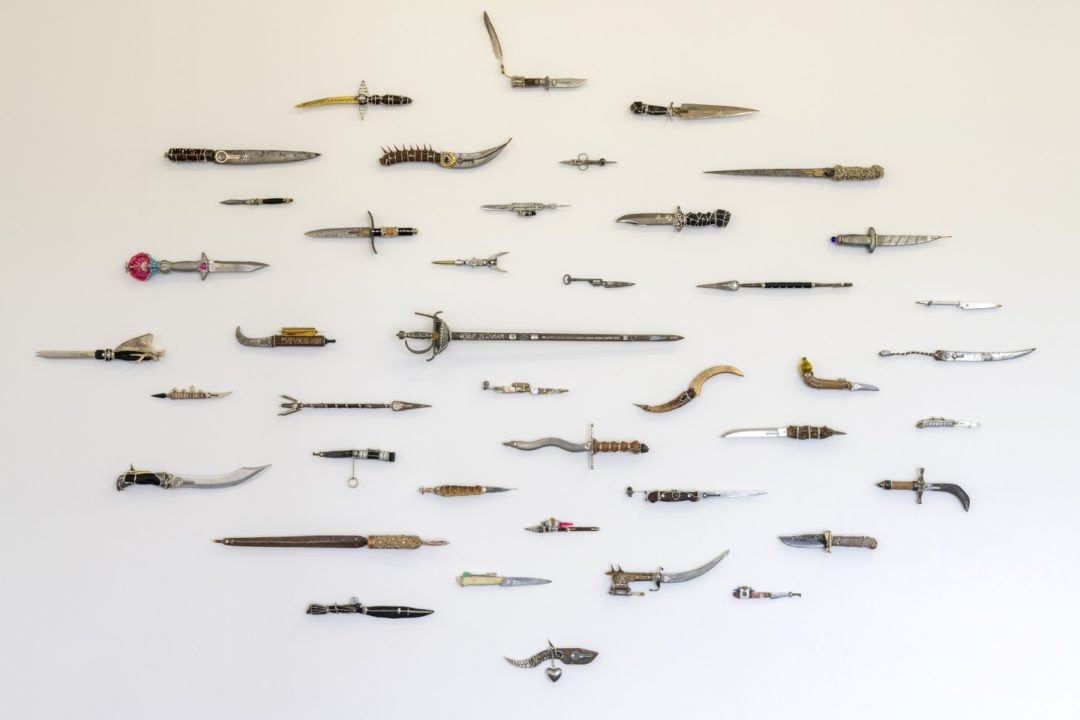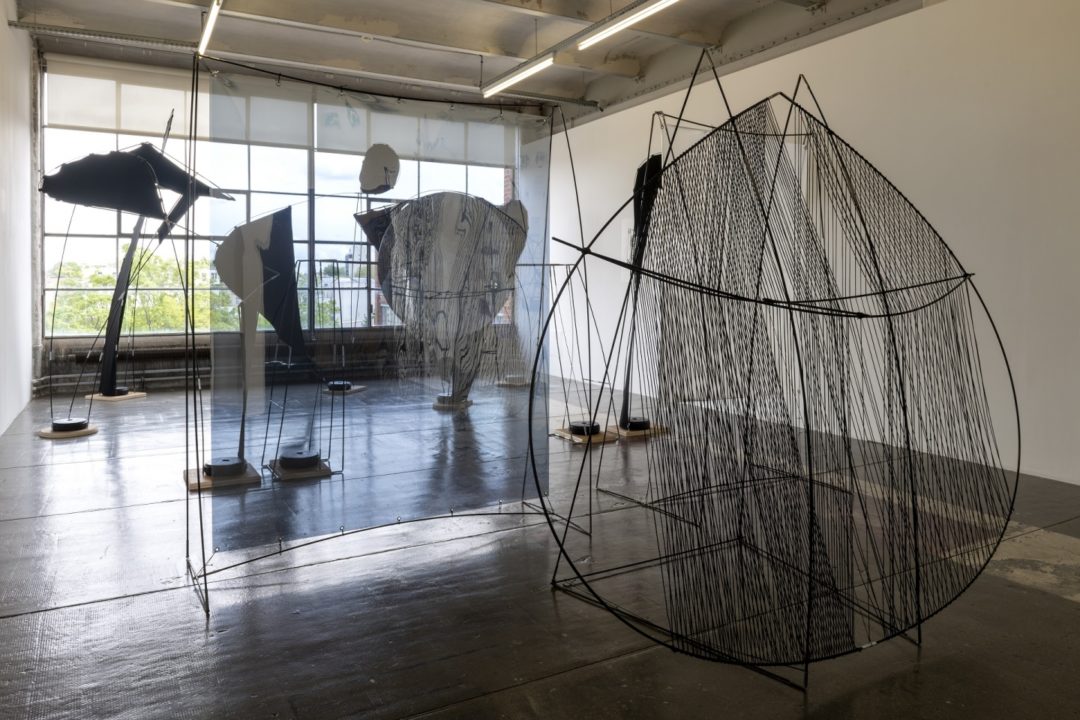The summer of collaboration at CRAC Alsace and CRÉDAC: “L’amitié : ce tremble” and “Tripple Dribble”

from February 18 to May 12 2024 at CRAC Alsace
and
from April 28 to July 13, 2024, at Crédac, Ivry-sur-Seine.
With Boris Achour (with Émilie Renard), Noémie Bablet, Caroline Bachmann, Anna Byskov (with Bertil Byskov, Margaret Byskov, Camila Farina and Sophie Lamm), Thomas Cap de Ville, Caretto & Spagna, Lola Gonzàlez, Donna Gottschalk, Tom Hallet, Eric Hattan (with Silvia Bächli, Rut Himmelsbach, Guido Nussbaum, Hannah Villiger and Anna Winteler), Dorothy Iannone and Sarah Pucci, Youri Johnson, Edit Oderbolz, Hatice Pinarbaşi (with Aram Abbas, Zahna Siham Benamor, Hugo Ferretto and Elif Pinarbaşi), Marthe Ramm Fortun, Marnie Slater (with Robin Brettar, Matilda Cobanli, Judith Geerts, Jessica Gysel, Katja Mater and Clare Noonan) and Sarah Tritz.
and Julia Borderie in collaboration with Simon Zaborski for the exhibition “TRIPPLE DRIBBLE” at CRÉDAC
Welcoming the summer under the sign of cooperation, collaboration, and friendship – this is the message from two partner institutions, CRAC Alsace and CRÉDAC. They have jointly conceived an exhibition in two chapters, sharing the privileges and responsibilities of identifying the artists, selecting and producing the works, and allocating the space and time for the shows.
The starting point for this endeavor was Natalie Clifford Barney’s poem “Au Temple de l’Amitié.” Even more so, the teams were inspired by her mythical surroundings and her bohemian and intellectual gatherings centered around the notion of friendship. The writer’s spirit seems present across the two art centers, especially through the installations and performances of Marthe Ramm Fortun (who incorporates intimate elements discovered directly in Barney’s archive, notably her hair extensions), but also through Edit Oderbolz’s delicate sculptures made from snail shells, referencing Barney’s phrase, “Like the shell of a snail, our friendship grows by a new ring each year.”
“Friendship: That Shiver, That Aspen” emanates a sense of renouncing the artist’s ego in favor of unity and balance. Each work, while existing individually in a space assigned exclusively to it, nonetheless contributes to a considerate oneness. Certain works forgo authorship altogether, like the anonymous embalmed birds placed in forgotten corners without being referenced in the usual floor plans and lists of works. Upon closer inspection, the viewer might deduce the author, but we will not reveal it here.

The tendency to overlook the ego further transpires in the various collaborative constellations proposed by the artists themselves. That is the case of Anna Byskov who includes in her installation and performance works by her father and mother, Bertil Byskov and Margaret Byskov, as well as her friends Camila Farina and Sophie Lamm. That is also the case of Eric Hattan who presents at CRAC works by fellow artists Silvia Bächli, Rut Himmelsbach, Guido Nussbaum, Hannah Villiger, and Anna Winteler, with whom he has forged close camaraderie since 1981, the year he opened Filiale, an exhibition space for young artists in Basel. And of course, Hatice Pinarbaşi’s installation at CRAC incorporates works by fellow artists Aram Abbas, Zahna Siham Benamor, Hugo Ferretto, and Elif Pinarbaşi, who contribute with a painting, a poem, and a sound piece. Inspired by her Kurdish background, Pinarbaşi places rugs on the floor, creating a community space where visitors are welcome to spend time, drink tea, and connect with each other, the artworks, and the space.
At CRÉDAC, Edit Oderbolz’s “Hybrid” acts as a counter-proposal. Her tent-like installation inspired Robin Brettar, Matilda Cobanli, Judith Geerts, Jessica Gysel, Katja Mater, Clare Noonan, Marnie Slater, and Kyle Tryhorn to create a temporary library – “À l’Amitié” – where visitors are invited to spend time thinking, reading, and discussing.

In some works, friendship is indispensable to the creation itself. Such is the poetic, slightly esoteric, and extremely moving proposal of two corresponding artworks by Youri Johnson. He has crafted a collection of unique daggers as gifts for 42 friends, each decorated in an original way to fit its new owner. Adhering to the superstition, the friends each gave Youri a coin for their dagger; these coins are displayed at the CRAC in a beautifully crafted altar. Similarly touching is Thomas Cap de Ville’s collection of handcrafted books. Across different formats, from small postcard-sized books to large, human-sized album-like compendiums, the artist frantically arranges photographs of his friends, drawings, and memorabilia from his youth – an ode to past times and friendships. Equally warming is Sarah Tritz’s epistolary collection of drawings, sketches, and cut-outs, relics of a postal correspondence between her and a friend. The specific authorship of this content is not discernible, speaking a code language that only a friend can decipher. As a poetic clin d’oeil, Boris Achour’s postcards – this time sent by “Jean-Luc Godard” – are a fitting counterpart to Sarah Tritz’s letters, suggesting that an encouraging, caring friend is invaluable, even if they are invented, deceased, or both.
Lastly, Tom Hallet’s mysterious works appear as a climax of the notions of friendship and collaboration, moving further into the realm of the inevitable codependence of the life and death cycles. Organic sculptures made out of earth wrapped in latex appear as swaddled dead bodies. Incidentally, each piece contains relics of a loved one. Through the duration of the shows, and with careful watering by the teams of the art centers, the sculptures come back to life through new plants growing out of them.
In parallel to “Friendship: That Shiver, That Aspen,” CRÉDAC is presenting another exhibition: “Tripple Dribble” by Julia Borderie in collaboration with Simon Zaborski. This long-term, ongoing project, which started in 2015, explores themes of collaboration and cooperation from various perspectives, culminating in a modified, or dare I say upgraded, basketball game. Working closely with the basketball team, Julia Borderie developed a series of sculptures to be incorporated into a live game following a set of new rules. As the game progresses, the sculptures are first positioned on and later removed from the court. Given the considerable size of the works, some going well over human height, the players must think strategically and rely heavily on their teammates. The key to winning the match is relearning the relational aspect of the game. In a subtle and practical way, Borderie gives a brilliant lesson on basic human interaction: unite against the obstacle.
“Triple Dribble” itself is a joint exhibition between CRÉDAC and Mac-Val, where the work will next be displayed. This project is also part of the Cultural Olympics initiative taking place in art spaces around Paris in the context of the 2024 Olympic Games.

Head image : Crac Alsace, “L’amitié : ce tremble”. Vue d’ensemble de l’installation d’Hatice Pinarbaşi : “Mon Ter Ter que je montre aux Vers de Terre, Ma Terre, Maquette, ma quête”, 2023.Courtesy de l’artiste. Photographie d’Aurélien Mole.
- From the issue: 108
- Share: ,
- By the same author: Ho Tzu Nyen, GESTE Paris, Jonathan Binet at Balice Hertling gallery, Radek Brousil at Stone Bell House, Prague, Unbound : Performance as Rupture at the Julia Stoschek Foundation, Berlin,
Related articles
Ralph Lemon
by Caroline Ferreira
Ho Tzu Nyen
by Gabriela Anco
Hilma af Klint
by Patrice Joly

